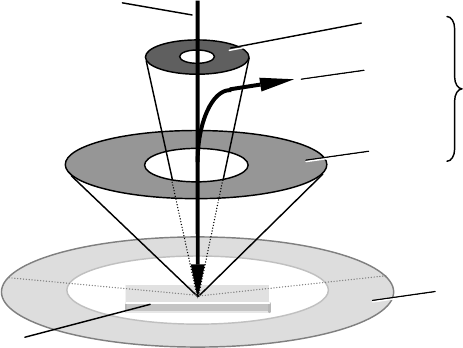
3 - 25
The signal intensity of the lower detector significantly decreases at short WD conditions. It is
recommended to use the lower detector at a WD of 7mm or longer.
(3) Mixed Signal of Upper and Lower Detectors:
The upper and lower detector signals can be mixed to show characteristics of both detectors.
The intensity of this signal does not vary much for a change of WD.
When the U/D Variable is shown with blue color, the ratio of Upper and Lower detector gain
follows the contrast settings those previously adjusted in Upper and Lower mode individually.
You may control the mixing ratio of upper and lower detector signals.
When it is shown with light gray color, both detectors have the same gain. In this case, the
ratio of two signals are changed automatically depending on WD position, and therefore the
signal of the upper detector is dominant at shorter working distances, while that of the lower
detector is outstanding at longer working distances.
NOTE: If the ABCC Link check box in the Column tab of the Setup dialog window has been
checked, ABCC will start automatically when detector selection is changed. Image
brightness will be adjusted to adequate value.
3.5.1.1 Secondary and backscattered signals and their Characteristics
The following figure shows detectable signals using the S-4800.
SE stands for secondary electron signal. BSE-L means backscattered electron signal
generated at low angles from the specimen. BSE-H backscattered electron signal generated at
high angles from the specimen. Each of these electron signals has characteristic information of
the specimen. You may obtain the best images of your samples and your specific purpose of
applications by choosing one or mixing of the signals.
The following table shows general characteristic of these signals.
Primary electron
BSE Lower
Specimen
SE
BSE-L
BSE-H
Upper detector


















